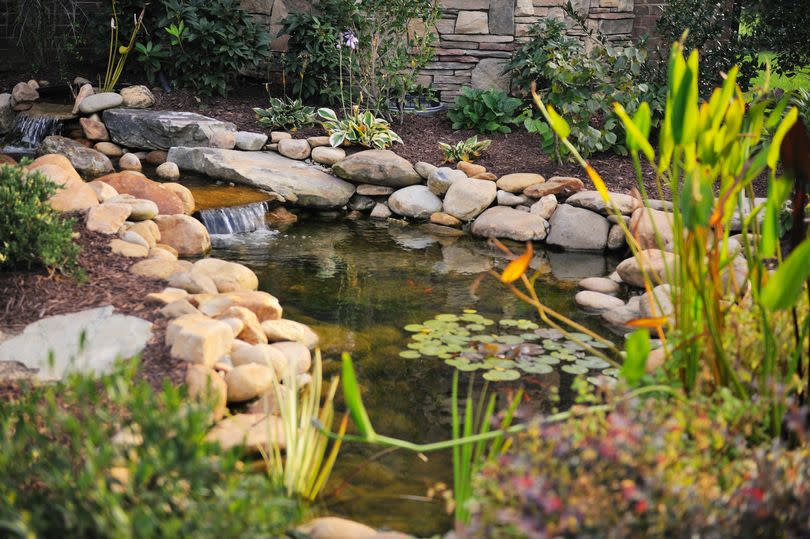Garden experts say 2024 trends will be wild

Four months into 2024 and spring had sprung - just about. After a wet start to the year, gardeners have finally managed to get out planting, whether that's tending to their fruit bushes, adding a new succulent to the bathroom, or preparing for a summer filled of more courgettes than any reasonable household needs.
The Royal Horticultural Society (RHS) believes 30 million gardeners will plant something in 2024 as more people look towards creating a food garden or greening up their home or living more sustainably; there are thousands of reasons people might pick up a trowel.
Far and away the biggest trend is a move to the sustainable, including a focus on what is local, planting with climate change in mind, and adding greenery to an otherwise urban space. The society has shared the trends it thinks more growers will pivot towards this year, based on horticultural trends and gardener enquiries shared with the RHS which totalled 115,000 for 2024.
Read more:
Gardeners swear by simple purchase that totally transforms roses
Create the tastiest eco-friendly garden with this Orchard Starter Bundle
1. Greening the grey
The RHS says gardeners who only recently developed green thumbs during the pandemic are leading the way in growing things in difficult circumstances; small patios, flat balconies or even without any outdoor space. These growers bring fresh life into urban areas and it is a trend the society expects will keep on flourishing.
Clare Matterson, Director General of the RHS, said: “I’m excited to see a growing interest in gardening in urban areas. My first ever garden was at a small flat in Brixton, London. Through this tiny space I was able to get my hands in the soil, connect with the seasons, and enjoy growing both flowers and vegetables. At the RHS we want to open up gardening for everyone, anywhere.”
2. Modest but sustainable farming
Growing your own fruit and veg combines multiple trends in to one dirt-covered package - sustainability, knowing where food comes from, and saving money on groceries. Admittedly, it takes a bit of time before a small veg patch starts to save money.
RHS expects more and more gardeners will start to grow their own food. Already, the most popular fruits and vegetables include tomatoes (technically fruit) followed by cucumbers, courgettes, chillies and runner beans, which are all fairly easy to grow and don't require a large space. These home growers aren't looking for a huge yield, the society says, but you might find yourself with more than a few courgettes every summer.
3. Pretty in purple
Purple varieties of classic vegetables aren't just a pretty addition to your plate, but also contain different nutrients than their standard orange or white counterparts. RHS says gardeners have started introducing purple varieties that are actually easier to grow and avoid previous drawbacks - including purple-ness which disappears after cooking.
4. Climate change fruits
It's easy to forget the drought and extended bout of dry weather in 2022 given recent wet spells, but the RHS has predicted an uptick in dry-weather plants, particularly fruits that enjoy a bit of additional sunshine. As well as grape vines, this includes figs, almonds, apricots, melons, peaches/nectarines and watermelons.
The society does stress that climate change is unpredictable - proven in the first four months of the year so far - so treat the trend with caution.
5. Localism
Some gardeners favour independent growing, especially with where their seeds come from following a disruption in the veg supply chain in 2022. For 2024, the RHS expects some gardening gurus to promote the benefits of seed strains adapted to local climates.
6. Going wild with wildflowers
RHS said: "Seeds that produce flowers that are less formal, from a milder colour pallet including flowering non-native meadows continue to be very popular. The use of wildflower seeds is moving away from a designated wildflower patch/meadow and into the borders - examples include alexanders, meadowsweet and welsh poppies.
"Even plants traditionally seen as ‘unwanted weeds’ such as herb robert and plantain are becoming popular. Cow parsley is now a desirable border plant and dandelions are recognised as being key to providing food for bees early in springtime."
7. Growing with the grain
Growers will continue to move towards naturalistic landscapes, rather than classic, formal layouts. According to the RHS gardens are more often being used as wild places, aiding emotional well-being, wildlife and maintenance.
8. Green gardening for a green world
Gardeners are still trending towards becoming more in tune with nature, including letting grass grow long and wild and allowing wildflowers to bloom in the spring. The RHS says: "Using less water overall, creating more plant diversity, choosing ethically and locally sourced materials represents a definite shift in day-to-day gardening techniques. Gardeners are looking at both water saving techniques, including mulch to retain moisture, creating raised beds alongside collecting and storing rainwater."
9. Houseplants reach critical levels
Houseplants have already crept into the homes of the green-fingered and succulent-killers alike and the RHS sees no sign of that stopping. "Houseplanteers want to fill every corner of their homes, with tropical-looking plants and orchids bringing a ‘jungle vibe’ to their spaces – and growing up instead of out. Favourites will include Epipremnum, Sedum morganianum, and old favourites such as string of hearts and spider plants," the society said.

 Yahoo News
Yahoo News 
